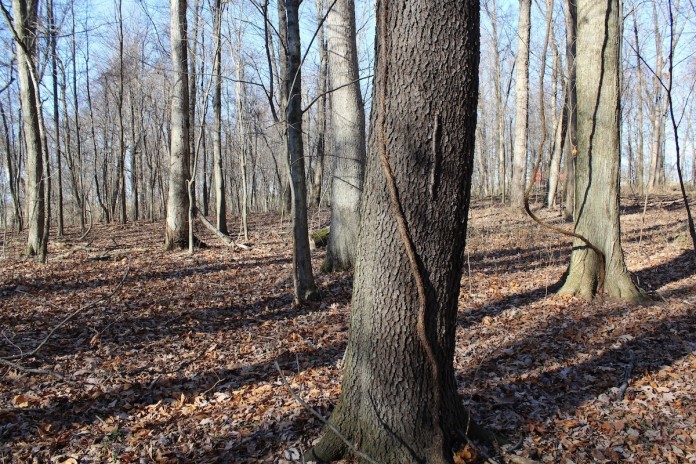CANTON, Ohio — You may get only one chance to market your timber, and you want to make sure you do it right. There are many ways to decide what is right, for different kinds of properties and different owners, but some basic principles usually hold true. Here are a few of those principles, which were shared during a timber marketing workshop held Nov. 18, by staff from the Stark Soil and Water Conservation District, the Natural Resources Conservation Service and Ohio Department of Natural Resources.
1. Deciding when to sell. This is often the biggest decision, and is usually prompted by a visit from a timber buyer, a problem with your trees, or the opportunity for more income. Your decision should be based on the maturity of existing trees, the impact to future growth and harvesting, and environmental factors.
2. Goal planning. Plan out each of your goals and contact the ODNR service forester for your county to discuss goals and options. This service is free, and the ODNR forester can meet with you, listen to your goals, review your resources and explain your options.
Related: ODNR forestry information.
3. To cut or not. If the service forester finds your woodlands ready to cut, he will outline the cutting parameters and provide you a list of trusted consulting foresters. The consulting foresters are the ones you will hire to help with bid gathering and the cutting process. If the service forester advises your property is not ready for harvest, he will explain how to get it prepared. Usually, this means marking boundaries, vine and invasive species control, and working to improve tree growth rate.
4. Hire a consultant. Call multiple consulting foresters, check their availability and ask for landowner references of the last two or three sales done by that forester, and call those landowners for their review.
5. Consultant contract. The consultant of your choice will review your property and agree to do the sale and develop a contract between you and himself, that outlines expectations. Every tree that is to be sold will be marked and measured.
Related: Be careful when using chain saws.
6. Gathering bids. Your consultant will put together bid packets and send them to multiple prospective buyers. The buyers will review the marked trees and submit their bids. Bids will be opened on a specific date and a determination will be made over which, if any, of the bids are accepted.
7. Timber harvesting contract. Your consultant will then develop a contract between the buyer and yourself (the landowner). The consultant will collect a deposit from the buyer, and the consultant can then be paid his first 5 percent.
8. Twelve months. The buyer will have 12 months to come and harvest and must notify the consulting forester prior to moving equipment to the site. When the consultant has been notified, he will collect the remaining balance and submit payment to the landowner. All trees are paid for prior to cutting.
9. During the cutting. The consulting forester will visit the site as the sale progresses, and will meet with the buyer to determine access paths and log loading sites.
10. Completing the sale. The landowner, when satisfied with the completion of services, pays the consulting forester his final 5 percent, and the sale is complete.
(Adapted from NRCS, Stark SWCD, ODNR and other experts who spoke at the Nov. 18 timber marketing workshop at the R.G. Drage Career Technical Center. For more information, visit the Ohio Division of Forestry landowner assistance page, at www.forestry.odnr.gov/landownerassistance, or contact your local SWCD or NRCS personnel.)
• • •
While there are many things to do before and during a sale, there are also some things NOT to do. Here are three things a landowner should never do when selling timber:
1. Never let the buyer decide which trees are going to be cut in your woods. That is your forester/consultant’s job.
2. Never sign a contract presented by a buyer. Although many landowners choose to sell directly to buyers, they are advised to work through foresters, to ensure maximum economic return and environmental stewardship.
3. Never sell directly to one individual. Always take multiple bids on a predetermined and marked set of trees, so that everyone is bidding on the exact same trees.












I appreciate your idea of asking a consultant’s recent sales about how their experience was. My uncle recently passed away and I’ve inherited some of his land, which I’m probably going to want to sell. I’ll have to look for a consultant I’d trust to help me make the most of the sale.